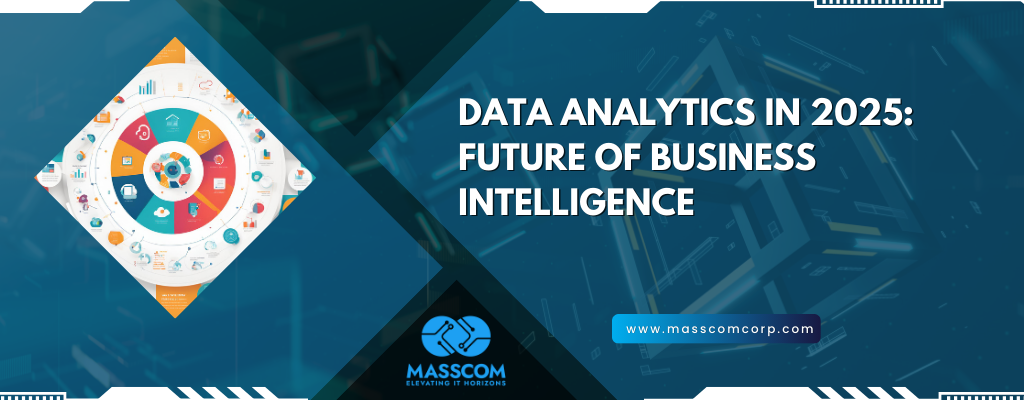In today’s fast-paced digital era, data analytics continues to evolve, transforming how organizations make decisions and create value. As we step into 2025, several key trends are shaping the future of data analytics. Here’s a closer look at what’s on the horizon:
1. AI-Driven Analytics: The New Standard
Artificial Intelligence (AI) is no longer optional in data analytics; it’s a necessity. AI-powered tools are enhancing predictive analytics, automating data preparation, and generating actionable insights at an unprecedented scale. Natural Language Processing (NLP) and generative AI are enabling non-technical users to interact with data through conversational queries, making analytics more accessible across organizations.
2. Real-Time Analytics for Immediate Decisions
The demand for real-time analytics surges as businesses strive to make faster, data-driven decisions. With advancements in edge computing and in-memory processing, organizations can analyze streaming data from IoT devices, sensors, and digital platforms instantaneously. Industries such as healthcare, finance, and logistics are particularly leveraging real-time analytics for critical decision-making.
3. Data Democratization and Self-Service Analytics
Empowering employees with data is a top priority in 2025. Self-service analytics platforms are enabling individuals across all departments to access, interpret, and act on data without relying on specialized data teams. This trend is fostering a culture of data literacy, encouraging innovation and agility at every organizational level.
4. Privacy-Enhancing Technologies (PETs)
As concerns about data privacy and compliance grow, Privacy-Enhancing Technologies (PETs) are becoming essential. Techniques like federated learning, differential privacy, and homomorphic encryption allow organizations to analyze data securely while maintaining user confidentiality. These tools are particularly valuable in sectors like healthcare and finance, where sensitive data is prevalent.
5. Augmented Analytics: Human + Machine Synergy
Augmented analytics combines human expertise with machine intelligence to uncover deeper insights. By automating mundane tasks like data cleaning and visualization, it enables analysts to focus on strategic activities. This synergy fosters smarter decision-making and enhances ROI on analytics investments.
Lets discuss your next project
6. Cloud-Native Data Platforms
The shift to cloud-native platforms is accelerating as businesses seek scalability, cost efficiency, and better collaboration. Cloud ecosystems offer integrated solutions for data storage, processing, and analytics, eliminating silos and enabling seamless data sharing across geographies.
7. The Rise of Data Observability
Ensuring data quality, reliability, and governance is a growing challenge in 2025. Data observability tools are emerging as a critical solution, providing real-time monitoring and diagnostics for data pipelines. These tools help organizations detect anomalies, reduce downtime, and maintain trust in their analytics systems.
8. Industry-Specific Analytics Solutions
Vertical-specific analytics solutions are gaining traction as industries recognize the value of tailored insights. From predictive maintenance in manufacturing to personalized customer experiences in retail, specialized analytics tools are driving innovation and competitive advantage.
9. Ethical AI and Bias Mitigation
As AI becomes deeply integrated into analytics, addressing bias and ensuring ethical use is paramount. Organizations are investing in transparent AI models and governance frameworks to ensure fair and accountable decision-making. Ethical AI is not just a compliance requirement; it’s a strategic imperative for building trust.
10. The Convergence of Analytics and Business Intelligence (BI)
The lines between traditional business intelligence and advanced analytics are blurring. Unified platforms are emerging, combining descriptive, diagnostic, predictive, and prescriptive analytics. This convergence is providing organizations with holistic views of their operations and enabling more effective strategies.
The future of data analytics in 2025 is dynamic and promising. By embracing these trends, organizations can unlock new opportunities, enhance operational efficiency, and stay competitive in a data-driven world.
Masscom Corporation is here to help your business navigate these transformations. From AI-driven analytics and real-time data processing to cloud-native solutions and privacy-enhancing technologies, we provide end-to-end data analytics services tailored to your industry’s unique needs. Partner with us to leverage the power of data and drive your success in 2025 and beyond.


